When we have a new house designed and built, we have a decision to make about the driveway, parking and vehicular maneuvering areas: asphalt paving, brick/concrete pavers, large flagstones, concrete or gravel?
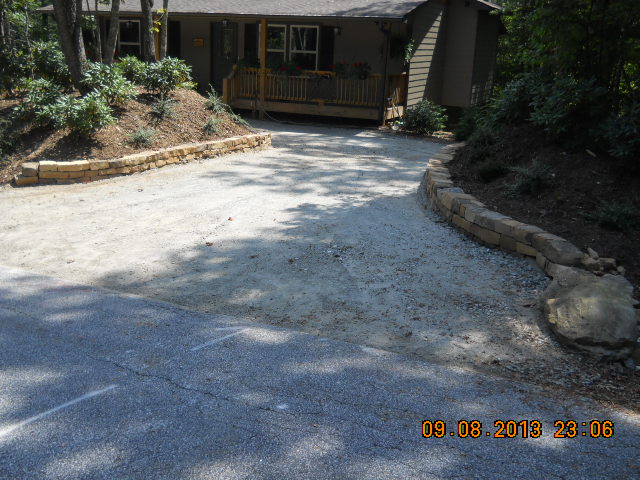
Click the image above to see the Architect’s website home page.
Some people start with gravel, however, they discover, after about the 4th time they add more gravel and have the surface regraded, that they may have spent about the same as if they would have paved the driveway with a more permanent material.
Brick or textured and colored concrete pavers represent a nice higher-end solution. Asphaltic concrete (what people usually call “asphalt” represents a middle of the road approach in terms of cost that many people find suitable for their objectives. While the HOME ARCHITECTS ® prefers the textured, integrally colored concrete pavers as a more aesthetic solution, not all clients wish to pay for that.
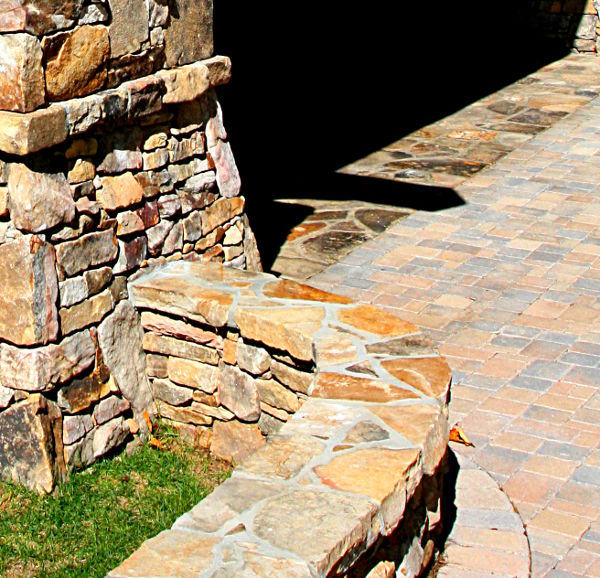
Click on the photo above to see the Eagle Mountain Aerie project.
There are hybrid solutions, in which some pavers, or even large, flat boulder stones (“mega-flagstones”) can be used, however those are about the most expensive solution of all presented here. However, you can use some of these large flagstones or textured concrete pavers as accent strips in association with asphalt paving to result in a blended solution that gives you the most bang for your buck.
.
.
.
This article focuses on common, everyday asphaltic concrete (what most people call “asphalt paving”).
First, you start with an inorganic sub-base of sand or other light-colored earth (i.e.: no dark humus or other soil that will support plant life). Masonry sand or other angular sand that compacts well to at least a 95% density will do. Most residential builders start by scraping off the organic top 12″ to 18″ of the earth on your land in the area to be paved, compact, then either add high-quality masonry sand or just move onto the next step. For a high-quality job: it is recommended that you now have a professional company spray an herbicide down, to inhibit the growth of plants and weeds coming up through the pavement.
Next, you add a layer of at least 6″ thick gravel. Rand Soellner, Senior Staff Architect at the HOME ARCHITECTS ®, likes to use “crusher’s run,” which is an angular limestone gravel with dimensions between 4mm to 76mm. The angular geometry of the pieces allows them to compact against each other, resulting in a very dense base, which should be compacted to 90% to 95%.
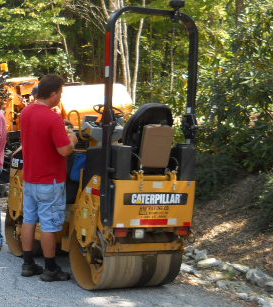
Click the image above to see the Project Index list.
Next, there will be some final leveling by the Asphalt Paving crew, to make sure that the gravel is a good, dense, flat surface with no protrusions. The paving company should drive over the gravel with a heavy rolling compactor machine, like this Caterpillar.
Now, a big dump truck arrives with a steaming hot load of asphaltic concrete. Its technical name is a type of concrete, because it has a small size gravel aggregate in its bituminous mix. (If you look at older asphaltic concrete that has been in place 10 years or more, you can readily see the little stones (gravel) in its body, exposed over the years). The asphalt mix is about 400*F when it is in the dump truck. You want it hot, to maintain a good, pliable consistency and molds to its final flat shape on your driveway.
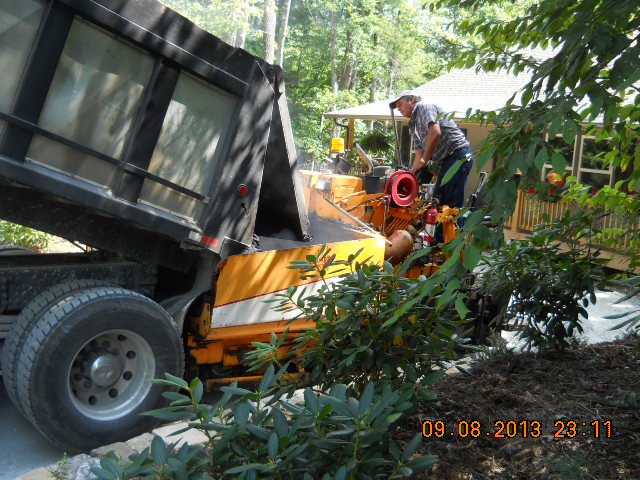
Click the image above to see Testimonials for the Architect.
There is a paving machine that will now pull up onto your gravel, like this LeeBoy self-propelled asphalt paver. The dump truck tips backward, dumping some of its hot asphaltic concrete into the hopper of the paving machine.
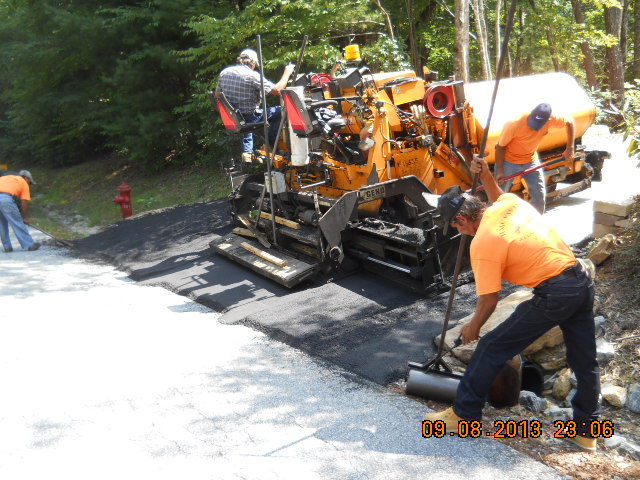
Click the image above to see the Contact Us page to get in touch with the Architect.
Then, the paving machine slowly travels over your driveway. This particular paving machine wasn’t wide enough to pave the entire width of this driveway in one pass, so the workers used wide pull screeds to pull the asphalt coming around the sides of the ejection outlet and drag it onto the gravel in a thickness of about 2″. Then another paving man used a heavy roller to compact and smooth the asphalt in those areas where the main paving machine couldn’t reach.
Lots of TLC (Tender, Loving, Care) on the part of the paving crew gets you a nice, smooth driveway, well blended to the edge of the existing street.
And that’s how it’s done.
For this and other paving systems integrated with your next house design, contact: Rand@HomeArchitects.com
tags: custom, mountain, cashiers, glenville, lake toxaway, hendersonville, lake wales, Florida, atlanta, aspen, telluride, timber frame, post and beam, log, hybrid, washington

1 Comment
Jitu Sadiki
12:12 am - October 2, 2013Rand,
Thank you for this issue and past issues of your monthly E-Magazine. They have all been very rewarding. I am particularly excited about this issue because of my long held curiosity regarding different materials used for driveways and internal roads.
I have a question that hopefully you can address for me. With a large piece of land of say 100 acres or more that would have a graded road system, how feasible would it be to transform that graded system into asphaltic concrete to prevent washed out roads over time.
Thank you for your time.
Jitu